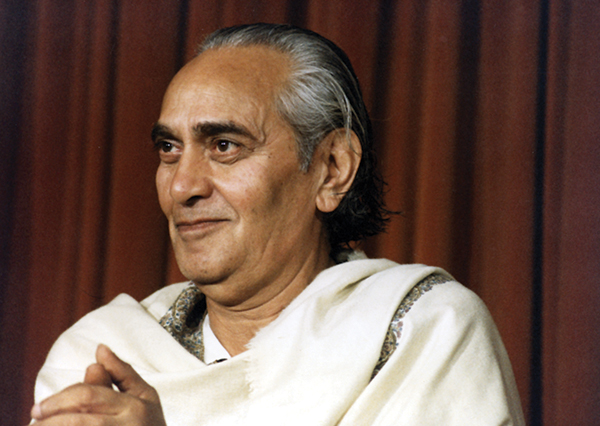In meditation, the goal is to go beyond the mind and experience our essential nature, which is described as peace, happiness, and bliss. But as anyone who has tried to meditate has probably experienced, the mind itself is the biggest obstacle standing between ourselves and awareness of our essential nature. This is why the use of a mantra becomes so important, for without the assistance of a mantra, a student can meditate sincerely and faithfully without fully experiencing the benefits or making much progress, despite his or her efforts. The mind itself is undisciplined and unruly, and it resists any attempts to discipline it or to guide it on a particular path. Thus, many people sit for meditation, and experience only the fantasies, daydreams, or hallucinations of the mind, never attaining the stillness that represents the genuine experience of deep meditation.
What is Mantra?
A mantra consists of a word, phrase, sound, or set of words that is used by the seeker in a particular and precise manner during the practice of meditation. This science of mantra is very subtle and profound. The meditator allows the mantra to repeat itself internally in the deepest and most subtle way possible. The goal of using this unique device is to give the mind some internal focus or point of concentration, so that it does not persist in its normal, scattered pattern of mental activity or daydreaming. Using this technique allows the mind to quiet itself and become still.
In the ancient tradition of meditation, it was said that mantra and meditation are like two sides of the same coin. Certainly there are some meditative techniques that do not use mantra as a way of deepening the meditative state, but these are generally limited to breath awareness, and such techniques can only take the student so far. They cannot actually help the student to attain the highest state. Thus, among all the methods of meditation, mantra is the most profound and advanced.
When a student meditates on a particular mantra or sound, he or she makes conscious efforts to focus the mind on the mantra, which finally leads to silence. It is important to realize that all sounds proceed from silence and the purpose of the mantra is to lead the student back to the silence, which may be called samadhi, nirvana, or the state of tranquility.
The Origin of Mantras
Modern students of meditation may have seen mantras written in books or may have heard of some of the most commonly known mantras, and wondered how these practices were developed and who originated their use. Students commonly wonder if any word or sound can be a mantra, and whether they can select a mantra for themselves from a book or by using a word or phrase to which they are attracted, such as the words “peace” or “love.”
Actually, the authentic mantras were not invented or developed by any person, but were received and experienced by the great sages in states of deep meditation. These sounds are not a part of any particular language or religion, but are profound sounds that are eternal and universal. When the sages came out from their deep states of meditation, they conveyed these precise mantras, the sounds that they had received, to those students who were prepared to attain the deeper states. These revealed mantras then helped the prepared aspirants to attain these same levels of deep meditation.
The power and significance of a mantra does not result from its literal meaning or connotations, but from the power of its subtle vibrations, which influence states of consciousness. For the modern student, this is probably the aspect of the science of mantra and meditation that is most difficult to comprehend. It is actually the subtle vibrations of the mantras themselves that have the power to encourage and facilitate deeper experiences of consciousness, but this process cannot really be explained or understood until it is experienced personally at some level.
Unfortunately, in the modern world, we have all become dependent on knowing and experiencing things only through the analytical aspects of the conscious mind, which learns through the external senses and then thinks and “knows” in a very limited and superficial way. Because of this, modern students expect that the power of their mantra is due to its literal meaning, and they sometimes maintain their sensitivity to the mantra on this level alone.
Actually, there are four levels, or koshas, of a mantra, and the meaning of a mantra is only the most primary and external level at which it can be perceived. The feeling of the mantra is the next, more subtle level of the mantra, followed by its deep presence or internal awareness. Finally, and most profoundly, the mantra is experienced as soundless sound. The goal of the meditator is to let the mantra deepen to this level of soundless sound. That is why a personal mantra is not uttered aloud or chanted.
. . . to be continued
Reprinted from Yoga International May/June 1992

